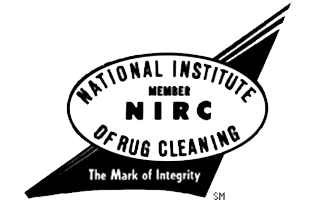Preparing your home for the unexpected is a big part of life. Commercial made area rugs are often an overlooked item in any household, but they can make or break your living space depending on how well you take care of them and what type of rug it is. If you want to keep things looking fresh and new when disaster strikes; this guide is for your synthetic fiber rug.
Did you know that your rugs can be a breeding ground for fungus and bacteria? If they are not dried properly, then the dark and moist area between your rugs and their padding will become an environment where these diseases thrive. And if that happens, it’s time to find new rugs!
After an incident that leaves your rugs soaked, it’s important to dry them as soon as possible. To do this efficiently, there are several preliminary steps you can take:
1. Remove Excess Water
There are a few steps you must do to properly dry out your rug after it’s been substantially wet. First, start by removing the excess water that is present on the surface of it using towels or any other absorbent material you may have available. Place the rug in between two layers of towels and press down firmly to pull out any remaining water.
You will be amazed at how much more water you can wring out of your wet towels by simply jumping on them. This is especially true for larger or bulkier items like a blanket, towel set, and the like. Once it becomes apparent that these heavy-duty fabrics are absorbing all they need to from this repeated process just replace them with another dry one over the same area for continued absorption!
For extreme cases, try adding a layer of kitty litter between the towels and rugs. The litter will soak up water faster and speed up the drying process by pulling moisture from deep within each fiber in turn. Then just throw away the kitty litter once you’re done. You can also use a wet-dry vacuum to suck the water out of your rug. Slowly move one end of the hose over it and then flip it, running the other side across as well.
2.Rug Drying
If the weather cooperates, there is no better way to dry your rug than by hanging it outside in a warm sunny spot. For smaller rugs, use clothespins or clips to hang them straight; for larger ones you may need something more substantial like an over-the-line rack system that will keep things tidy and allow air movement on both sides of the fabric.
If you’re drying a rug and it’s out of the question to take it outside, then using fans is an option. Prop up your rug with heavy books or other supportive objects, and point one side of the fan at the floor on that end. Make sure there are no obstructions in front of either side so air can flow freely across both sides equally for maximum dryness!
A quick tip: It’s true that the cold air from a room unit will make it tougher to know whether your carpet is dry or wet. This happens because, when you turn on an A/C unit in one spot of the house, cool indoor air comes into contact with damp flooring like carpets.
3. Dry Wet Padding
If you’ve also washed your rug pad, you’ll want to make sure it’s dry before covering it with a rug again. Most pads are of a manageable size and can be taken outside where a fresh breeze and direct sunlight can handle the drying process for you. Be careful when handling a wet rug pad, depending on the type of material used, the added weight of the water could cause the rug pad to tear or rip. A wet/dry vacuum could come in handy again here. Use the vacuum to remove most of the moisture before moving the rug outside.
For larger rug pads, hanging them may not be a viable option. In that case, it’s likely best to roll your rug pad to provide more stability while moving it. Find a dry area, perhaps in a garage or other area near power. Support the rug with boards, blocks, bricks, anything you have available to lay it out off of the ground. Much like we treated the rug, we want to set fans along one side to keep a flow of air moving under and through the pad. This will remove any remaining moisture.
4. Disinfect and Deodorize
No matter how you get your rug dryed, it is important that after the drying process a deodorizer and disinfectant are used. If you have a synthetic rug, you can rubbing alcohol which will kill bacteria left in from water as well as any lingering odors such as fishy smells caused by pet accidents (avoid bleach, as it can leave stains).
For the best results, fill up a spray bottle with rubbing alcohol and spritz all sides of the rug. Let it air dry and repeat as needed to remove that foul smell! This process is not recomended for nataural materails or antique rugs. It’s best to use a professional rug cleaner.
Conclusion
Drying rugs can be a particularly tough chore for many, but it can be made easy with the correct equipment and skills. If you need to take your rug drying game up a notch because you have an oriental, persian rug, antique or valuable rug such as a family heirloom then a professional is needed. S&S Rug Cleaners is an excellent choice because we have all of the right tools at our disposal. We also know how to properly clean and restore your rug to maintain it’s value and beauty.




